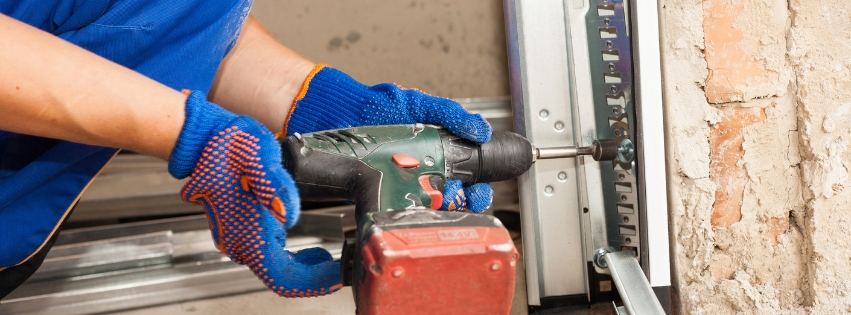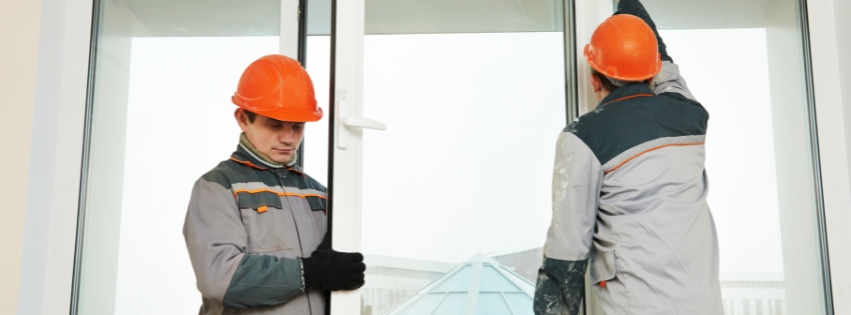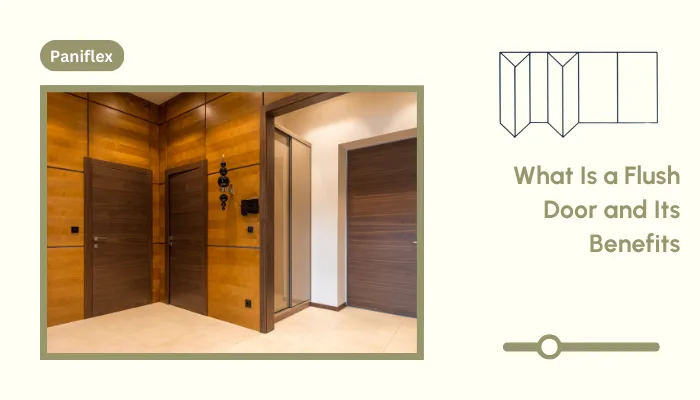Sliding glass doors are a popular feature in many homes and commercial spaces due to their sleek design and ease of use. However, over time, these doors can become a hassle when they start sticking or dragging. A sticking sliding glass door can be a source of frustration and may eventually lead to more severe damage if not addressed promptly.
In this guide, we will walk you through the process of fixing a sticking sliding glass door. We’ll cover how to identify the cause, gather the right tools, and apply necessary maintenance to ensure your door operates smoothly for years to come.
Brief breakdown:
- Identifying the root cause, such as dirt, worn rollers, or misalignment, is key to effectively fixing a sticking sliding glass door.
- Regular cleaning and lubrication of tracks and rollers can prevent friction and maintain smooth door movement.
- Adjusting or replacing misaligned rollers and damaged tracks ensures long-term door functionality.
- Ongoing maintenance, including periodic checks for wear and tear, can prevent future sticking issues.
Ready to experience the benefits of custom closet doors? Explore our range of Paniflex products now.
Step-by-Step Process to Fix a Sticking Sliding Glass Door
Understnading the the essential steps for fixing sticking sliding glass door is crucial to restore smooth operation of your door. Below are the steps you can follow to fix a sticking sliding glass door:
1. Identify the Cause of the Stickiness
A sticking sliding glass door is usually caused by a few common issues, such as dirt-filled tracks, worn-out rollers, or misalignments. Identifying the exact root cause is crucial for fixing the issue effectively.
- Dirt and Debris: Over time, dirt and other particles can gather in the tracks,, making it harder for the door to glide smoothly.
- Misaligned or Worn Rollers: The rollers at the bottom of the door may wear out, causing it to become heavier and more difficult to move.
- Misalignment: If the door is off-center, it may rub against the track or frame, causing friction.
- Warped Tracks or Door Frames: A warped frame or bent tracks can interfere with a smooth sliding motion.
Once you’ve identified the cause, the appropriate steps can be taken to resolve it and restore functionality.
Inspecting the Tracks
Before diving into repairs, inspect the tracks for visible debris or grime that could be causing the sticking. A thorough inspection allows you to identify areas that need immediate cleaning or further attention.
- Use a flashlight to inspect the tracks thoroughly, focusing on the corners and edges.
- Remove visible debris such as dust, leaves, or hair from the track.
- Test the door’s movement to pinpoint the specific areas that are sticking.
If the door still struggles to glide, the problem might lie elsewhere, such as misaligned or worn rollers.
Examine the Door’s Hardware
In addition to inspecting the tracks, check the door’s hardware for any damage or misalignment. Faulty rollers or missing screws could be contributing to the stickiness.
- Check for misaligned rollers that could prevent smooth movement.
- Inspect screws and fasteners for any damage or looseness that might be causing instability.
- Evaluate the entire hardware setup, including the rollers, for signs of misalignment or wear that could affect the door’s operation.
Diagnosing Root Causes
Doing a diagnosis in the proper way is crucial to avoid unnecessary repairs. For example, if the issue is simply dirt in the tracks, cleaning may be enough. However, if the rollers are misaligned or worn, more extensive repairs will be necessary.
- Check for misaligned frames or weatherstripping that could be interfering with the door’s movement.
- Evaluate whether cleaning is enough or if further repairs, like roller replacement, are necessary.
- Ensure that you’re diagnosing the true cause to avoid replacing parts that are still functional.
Also Read: Understanding Patio Door Dimensions For Sliding Glass Doors
2. Gather Necessary Tools and Safety Gear

Before starting the repair process, make sure you have all the required tools and safety equipment ready. Being properly equipped will make the job safer and more efficient.
Below is a list of essential tools and safety gear you’ll need for the job:
- Screwdriver (flathead and Phillips): For removing screws and adjusting door parts.
- Wrench or Pliers: For adjusting or removing bolts, especially for the rollers.
- Vacuum or Brush: To clean out dirt and debris from the tracks.
- Lubricant: To smooth the movement of the tracks and rollers.
- Level: To check if the door is properly aligned.
- Safety Gloves and Goggles: Wear safety gloves and goggles to safeguard your hands and eyes while working.
Repairs can cost between $10 and $50 per square foot, depending on complexity.
3. Clean the Track Thoroughly
One of the primary reasons for a sticking sliding door is debris and dirt buildup in the track. Cleaning the track is a crucial first step, as it can resolve a significant portion of the problem.
A clean track allows the door to glide easily, reducing friction and ensuring smoother movement. Below are the steps to clean the track:
- Remove Visible Dirt: Use a vacuum or brush to clear out loose dirt, dust, and other debris.
- Wipe Down the Tracks: Use a damp cloth to clean any remaining dirt and grime. Be sure to dry the tracks afterward.
- Use a Cleaning Solution: Apply silicone spray to the tracks for smoother movement. Avoid petroleum-based lubricants or harsh chemicals that may damage the tracks or rollers.
- Check the Track Condition: While cleaning, inspect the track for any damage or warping that could be affecting the door’s movement.
Cleaning the tracks alone might not solve the problem if the rollers or tracks are misaligned. Inspect the entire setup to determine whether cleaning is enough or if other repairs (such as roller replacement) are necessary.
4. Inspect and Adjust Door Alignment

Door misalignment can lead to sticking because the door may rub against the track or frame, causing friction. Adjusting the alignment can resolve many sliding door issues and ensure the door functions correctly.
To identify misalignment, follow the steps below:
- Examine the Door’s Position: Close the door and check if it is aligned properly within the frame. If the door is out of alignment, you may notice uneven gaps or the door dragging at one side.
- Adjust the Roller Height: Use a screwdriver to adjust the height of the rollers. This can help the door sit properly in the track, reducing friction.
- Check the Track for Deformation: If the track is bent, you may need to straighten it gently with pliers or replace it if the damage is significant.
Once the issues are identified, use the adjustment screws on the roller brackets to set the door at the correct height.
Misalignment can affect the door’s performance and lead to wear on the rollers and tracks. A proper diagnosis allows you to fix the issue before it causes further damage. Let’s discuss this in the next section.
5. Remove the Door if Necessary
If the above steps do not fix the problem, or if you need to inspect the rollers and track in more detail, removing the door may be necessary. Removing the door allows you to work on it more freely and make deeper adjustments to ensure it moves smoothly. Below are the steps to safely remove your sliding glass door.
- Lift the Door: Most sliding doors are held in place by rollers at the bottom. Lift the door slightly and tilt the bottom toward you to remove it from the track.
- Remove the Screws: Some doors may be secured with screws. Remove them before lifting the door out of the frame.
- Place the Door Carefully: When removing the door, lay it down on a soft surface to prevent glass damage.
Once the door is removed, you can inspect the rollers, tracks, and other components more easily.
6. Inspect and Clean the Rollers
The rollers are a key component in the smooth functioning of a sliding door. If they’re dirty or damaged, cleaning or replacing them may often resolve the issue.
Ready to experience the benefits of custom closet doors? Explore our range of Paniflex products now.
Visual Inspection of Rollers
A proper inspection of the rollers will help you determine if they are the cause of the issue. Look for signs of wear or damage.
- Shine a flashlight along the length of the track to look for debris or worn rollers.
- Check the rollers for damage such as flat spots or corrosion.
- Spin each roller by hand to check for resistance or wobbling.
Roller Adjustments
If you find that the rollers are misaligned, adjustments can usually fix the issue. Ensure both rollers are adjusted equally for smooth movement.
- Adjust the rollers using the adjustment screws to ensure the door is aligned properly.
- Replace damaged rollers to restore smooth movement.
Proper roller maintenance is essential to ensuring long-term functionality.
Suggested Read: If you’re hearing strange noises or noticing roller resistance in your sliding door, check out this detailed Reddit discussion on Diagnosing Sliding Glass Door Issues. Reddit users share their experiences and solutions, from simple adjustments to more significant repairs.
7. Lubricate Tracks and Rollers Properly
Lubricating the tracks and rollers will help restore smooth movement and prevent future sticking.
Steps to Identify Issues
Lubrication is only effective if the underlying issues, such as dirt or misalignment, are addressed. Start by checking for friction and wear.
- Slide the door back and forth to identify sticking points.
- Inspect the tracks and rollers for dirt or debris.
- Listen for unusual sounds such as squeaks or grinding noises, which can indicate lubrication issues.
Also Read: Center Roller Brackets (Top Roller)
Correct Lubrication
After cleaning and inspecting, apply the proper lubricant to the tracks and rollers.
- Use silicone or white lithium grease for lubrication, as these options do not attract dirt.
- Avoid WD-40, which can attract dust and worsen the problem over time.
Lubrication, combined with proper diagnosis, will ensure smooth operation and prevent the door from sticking.
Suggested Read: Want advice on choosing the right products to fix your sliding door? This Reddit discussion provides insight into the pros and cons of various lubricants and cleaning products, including the effects of WD40 on door performance over time.
8. Check and Repair Tracks
Tracks that are bent, damaged, or warped are another common reason for sticking sliding doors. If the track is not aligned properly or if it has sustained damage, it may be difficult for the rollers to glide smoothly.
Checking and repairing the tracks is a crucial step in ensuring your door slides effortlessly. Here’s how you can do it.
- Inspect the Tracks for Damage: Look for dents, bends, or cracks in the track. Use a level to ensure the track is straight and aligned.
- Align the Track: If the track is slightly bent, you can use pliers to straighten it. Be careful not to apply too much force, as you could cause further damage.
- Replace the Track if Necessary: If the track is too damaged, it may need to be replaced entirely. You can find replacement tracks at most hardware stores.
Once the tracks are in good condition, the door should slide more smoothly.
9. Reinstall and Adjust the Door
Once you’ve completed the necessary repairs, it’s time to reinstall the door. Properly reinstalling the door ensures that all of the adjustments you’ve made, such as cleaning, lubricating, and realigning, are maintained.
Below are the steps for reinstalling and adjusting the door.
- Lift the Door Back Into the Track: Place the door back into the track carefully, ensuring the rollers align with the track.
- Adjust the Height: Use a screwdriver to adjust the roller height until the door is aligned properly and moves smoothly.
- Test the Door: Open and close the door to ensure it glides smoothly without sticking.
- Test and Maintain Regularly
After fixing your sliding glass door, it’s important to test it regularly to ensure it remains in good condition. Regular maintenance can prevent future sticking issues and prolong the life of your door.
Below are some ways to maintain the sliding glass door regularly.
- Routine Maintenance: Clean the tracks and rollers periodically to avoid dirt accumulation.
- Check Alignment and Lubrication: Periodically check the door’s alignment and reapply lubricant as needed.
- Monitor for Wear and Tear: Regularly inspect for any damage or signs of wear, especially on the rollers and tracks.
Suggested Read: Seeking a deeper understanding of sliding door maintenance? Check out this insightful Reddit thread, where users discuss how early intervention, like cleaning or replacing parts, can prevent costly repairs and extend the life of your doors.
Custom Door & Mirror Solutions for Sliding Glass Doors
At Custom Door & Mirror, we specialize in providing customized sliding glass doors that are precision-engineered to fit any space. With a range of design options, our products ensure a seamless fit for residential and commercial projects.
Here’s how we can assist you:
- Precision Fit: Every sliding door is crafted with exact measurements, ensuring a seamless fit and smooth operation. No need for time-consuming adjustments or modifications.
- Customizable Styles & Finishes: With a wide selection of door styles and panel configurations, you can select the perfect design to match your project’s aesthetic needs while solving functionality issues like sticking.
- Easy Installation: Our sliding doors are designed for quick and easy installation, saving contractors time and reducing the chances of errors or delays.
- Improved Durability: Built with high-quality materials and advanced manufacturing technology, these doors stand up to wear and tear, ensuring long-lasting performance and smooth operation.
- Mirror Integration: Custom mirrors can be paired with your sliding doors for a functional yet elegant addition to closets or other spaces, maximizing both storage and visual appeal.
Custom Door & Mirror proudly serves professionals across key metropolitan areas, including Long Island, New York City boroughs, New Jersey, and Connecticut, providing tailored solutions for large-scale and residential projects alike.
Conclusion
Fixing a sticking sliding glass door may seem daunting, but with the right tools and knowledge, it’s a straightforward task. By following the steps outlined in this guide, you can restore your sliding glass door’s functionality and ensure it continues to operate smoothly for years to come.
Remember to maintain your sliding doors regularly to avoid future issues. Whether you’re an architect, contractor, or interior designer, incorporating custom, high-quality doors like those offered by Custom Door & Mirror can further enhance the performance and aesthetics of your projects.
Our precision-engineered doors fit seamlessly into any space and are easy to install, ensuring quality results for your projects. Visit the Custom Door & Mirror website today to place a bulk order and get the perfect fit for your next big project!
FAQs
1. Can I repair a sliding glass door myself?
Yes, many common sliding glass door issues, such as sticking or misalignment, can be repaired with basic tools and supplies. However, for complex problems like broken glass or frame damage, it’s best to consult a professional.
2. How to properly secure a sliding glass door?
To secure a sliding glass door, use a door lock with a deadbolt, install a security bar or rod in the track, and ensure the door is properly aligned to prevent easy prying or forced entry.
3. What is the lifespan of a sliding glass door?
The lifespan of a sliding glass door typically ranges from 20 to 30 years, depending on the material quality, maintenance, and environmental factors. Regular upkeep can extend its durability.
4. How to improve sliding glass door movement?
To improve sliding door movement, clean the track regularly, lubricate the rollers, and check for debris or misalignment. Replacing worn-out rollers can also ensure smoother operation.






